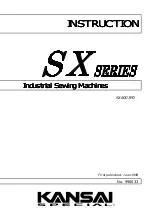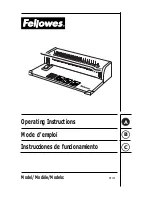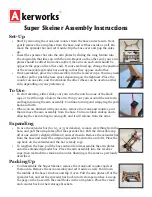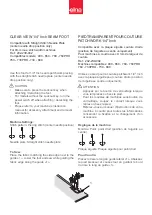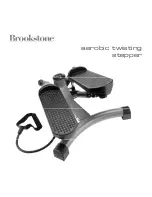
For best sewing results, use a top quality, long staple, polyester or poly/cotton thread
for all-purpose sewing. Skipped stitches, broken threads, and poor stitch quality are
often a result of using old or inferior thread. Use the same type of thread for both upper
and lower threading for a consistent stitch quality.
Winding the Bobbin
1. To release the clutch for bobbin winding, pull out the
handwheel until it clicks [Fig. 1].
2. Place a spool of thread on the spool pin and bring
the thread around the bobbin winding tension disc as
shown [Fig. 2].
3. Place the thread end through a small hole in the bobbin
from the inside to the outside [Fig. 3].
4. Place the bobbin on the bobbinwinder spindle
matching the small groove on the bobbin with the
spring on the spindle [Fig. 4]. Push the spindle to
the right [Fig. 5].
5. Hold the end of the thread [Fig. 6] and depress the
foot control [Fig. 7]. When the thread has wound on
the bobbin several times, stop the machine and clip
the thread end close to the hole in the bobbin [Fig. 8].
Depress the foot control again to continue winding the
bobbin.
6. When the bobbin is fully wound, stop the machine.
Push the bobbinwinder spindle to the left, clip the
thread and remove the bobbin [Fig. 9].
7. Reengage the clutch by pushing the handwheel until
it clicks into place [Fig. 10].
1
Starting to Sew
• Always begin sewing with the needle in the highest
position. Always place the needle in the highest position
at the end of a seam before removing the fabric from the
machine.
• Always turn the handwheel toward you, not away
from you. Never “rock” the handwheel.
• Be sure to lower the presser foot before sewing to
engage the tension discs for perfect stitch balance. This
is an easy step to miss when sewing extra thick fabrics.
• Gently guide the fabric as you sew; never push or
pull the fabric under the needle.
• Don't sew over pins. Simply remove the pins as they
approach the needle. Sewing over pins can damage
your machine, nick the needle or cause personal injury.
• Use the proper needle/thread/fabric combination.
See chart on page 15 of the instruction book..
1. Select a stitch. Make the appropriate stitch width
and length adjustments.
2. Turn the hand wheel toward you to raise the needle
to its highest position.
3. Raise the presser foot and pull about six inches of
thread to the back of the machine and under the
presser foot.
4. Place the fabric under the presser foot aligning the
cut edge of the fabric with the seam guide marking
on the needle plate. Position the fabric so the needle
is about 3/8” from the beginning fabric edge [Fig. 1].
5. Lower the presser foot and depress the foot controller to
begin sewing. The sewing speed is determined by the
amount of pressure you apply to the foot controller.
6. To secure the beginning of a seam, take 3-4 stitches
forward, then push down and hold the reverse lever
to take 3-4 stitches in reverse.
7. Release the lever and continue sewing forward at a
consistent speed while guiding the fabric along the
seam guide marking.
8. At the end of the seam, press and hold the reverse
lever to take 3-4 backstitches to secure the seam end.
9. Before removing the fabric raise the needle to the
highest position [Fig. 2].
SEWING TIPS
BEGINNING TO SEW
10. Raise the presser foot and gently pull the fabric to
the left, releasing at least six inches of thread
from needle and bobbin [Fig. 3].
11. Use the thread cutter on the back of the presser
foot bar to cut both threads close to the fabric
[Fig. 4].
Fig. 2
Fig. 3
Fig. 1
Fig. 4
Several synchronized parts of the sewing machine interact to form a stitch. The
needle moves up and down as the shuttle spins in perfect time so that the bobbin
thread interlocks with the needle thread through the layers of fabric. To maintain
this perfectly tuned timing, here are a few sewing tips you'll want to follow:
7
Simplicity Sewing Machine Education Helpline: 636-651-0030
Simplicity Sewing Machine Education Helpline: 636-651-0030
Fig. 1
Fig. 3
Fig. 4
Fig. 5
Fig. 6
Fig. 7
Fig. 9
Fig. 10
Fig. 8









